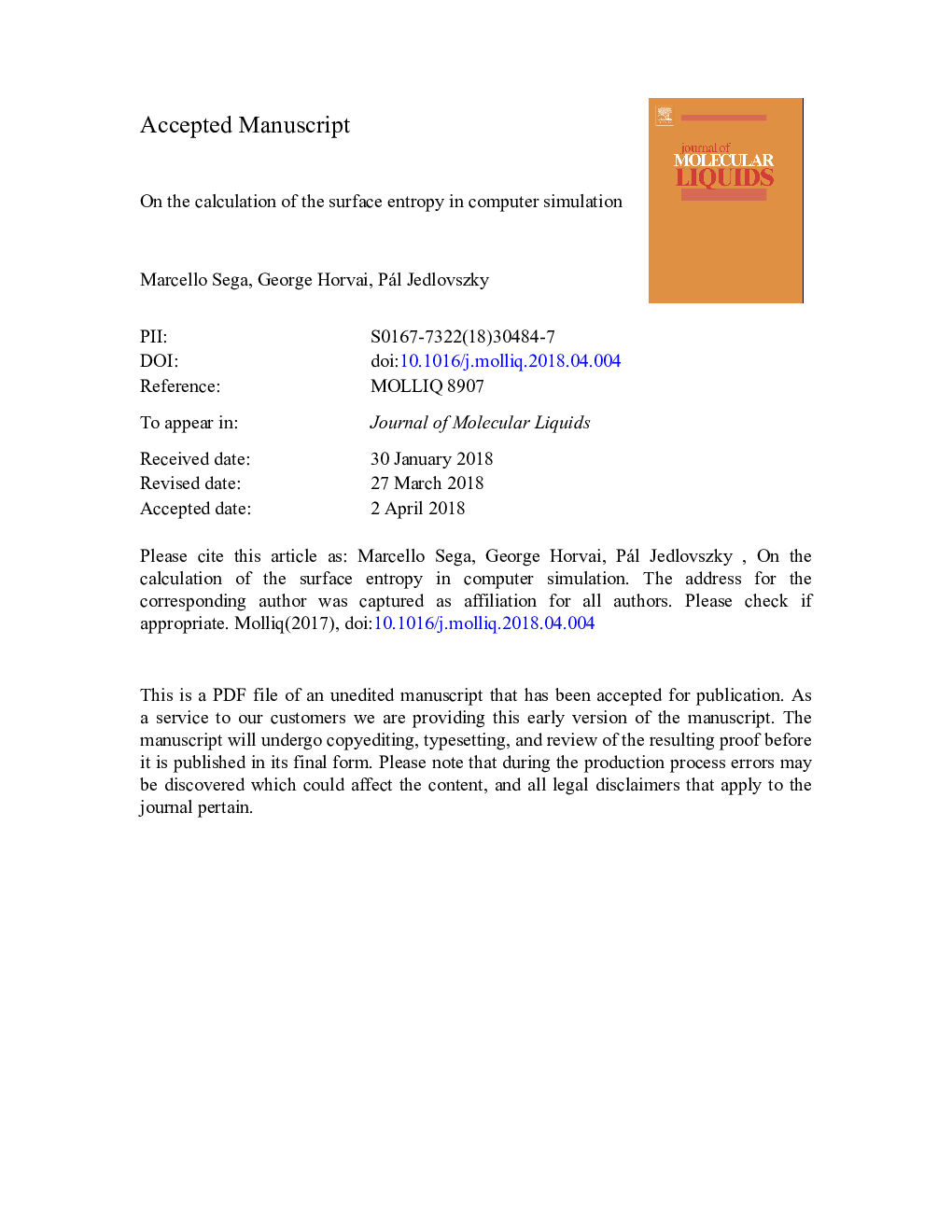| Article ID | Journal | Published Year | Pages | File Type |
|---|---|---|---|---|
| 7842539 | Journal of Molecular Liquids | 2018 | 24 Pages |
Abstract
The surface excess of the entropy at the liquid-vapour interface of argon and water are calculated in a broad temperature range in three different ways involving the computer simulation determination of the surface tension. The three methods include (i) the calculation of the analytical derivative of a suitably chosen function fitted to the surface tension vs. temperature data, (ii) calculation of the numerical derivative of these data, and (iii) direct determination of the surface entropy through the surface excess of the energy. Our results show that this latter method provides inaccurate results with large error bars, and the calculation of the surface entropy this way with reasonable accuracy would require unfeasibly long simulations. On the other hand, the use of the numerical and the analytical derivatives leads to compatible results that can be obtained in a computationally feasible way in both cases. Thus, the present results suggest that the surface entropy, determined as the derivative of the surface tension vs. temperature data, can be used to calculate the surface excess of the energy in a computationally efficient way.
Related Topics
Physical Sciences and Engineering
Chemistry
Physical and Theoretical Chemistry
Authors
Marcello Sega, George Horvai, Pál Jedlovszky,
